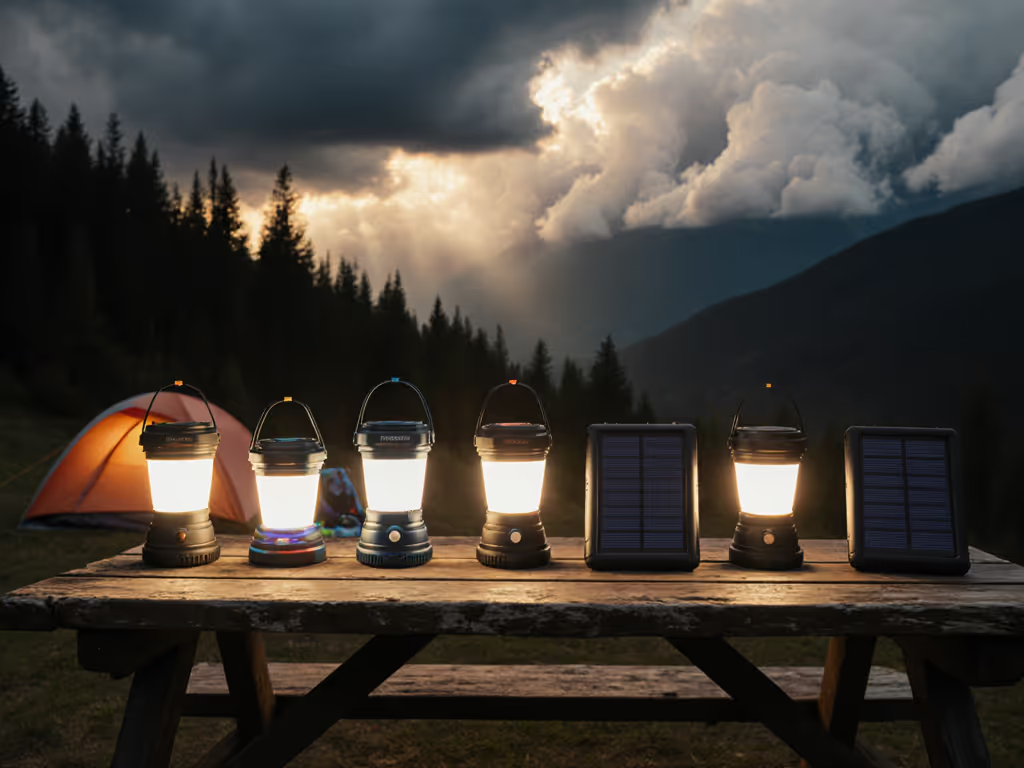
7 Best Battery Efficient Lighting Solutions for Camping in 2025: Save Power and See the Stars
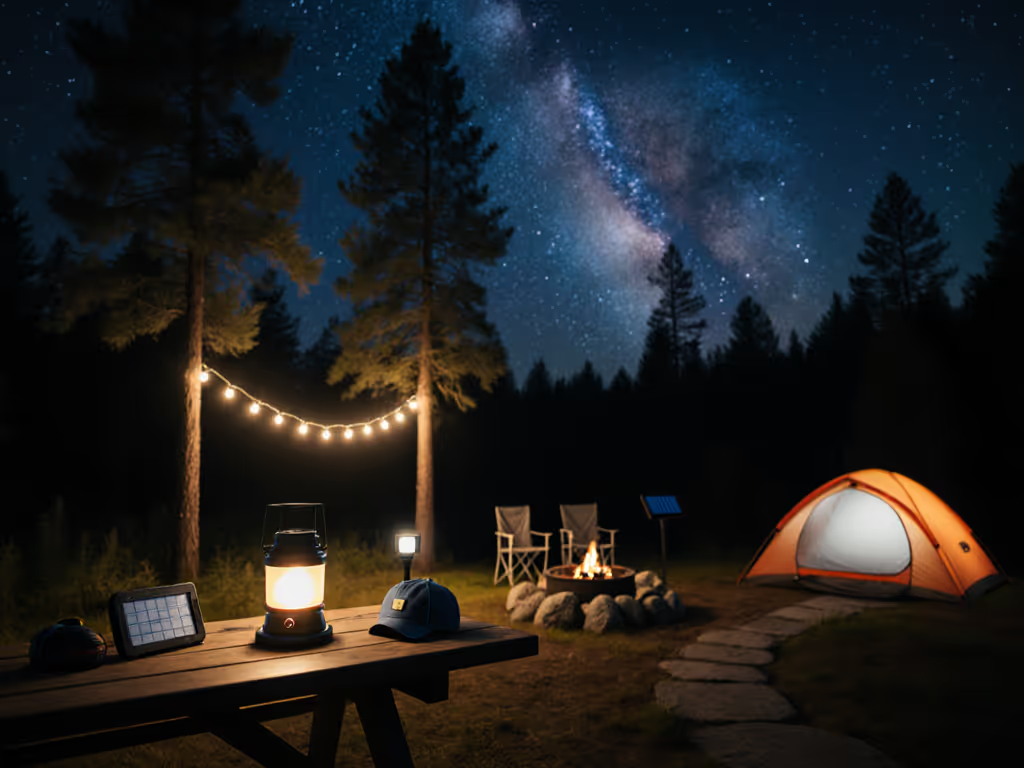
Why Battery Efficiency and Dark Skies Matter in 2025
Looking for the best battery efficient lighting for camping that actually helps you see the Milky Way instead of washing it out? Today’s campers want light that sips power, preserves night vision, and respects dark-sky principles. Traditional lanterns can feel like car headlights in a quiet forest, draining batteries and blasting glare that makes stargazing and trail awareness harder. What if your camp setup delivered gentle, warm, targeted illumination and ran all weekend on a single charge?
Across parks and public lands, dark-sky programs encourage campers to use warm color temperatures and shielded fixtures to limit skyglow and wildlife disruption. Modern light emitting diode (LED) [light emitting diode (LED)] paired with better optics, regulated drivers, and dim-to-warm features have changed what is possible. You can cook, read, and navigate safely without turning your site into a beacon. In 2025, efficiency is about more than lumens per watt; it is about smart control, directionality, and the right spectrum for the task.
That is where Camp Crew Lighting comes in. As specialists in dark-sky-friendly camping lighting guidance, we evaluate power consumption, beam shaping, and real-world usability in our reviews and guides so you can stretch runtimes and enjoy natural nighttime rhythms. Through comprehensive reviews of camping lighting products, head-to-head comparisons, and how-to guides, we help you choose cleaner light that feels comfortable, lasts longer, and keeps the stars visible.
Best Battery Efficient Lighting for Camping: The 7 Standout Picks
Below are seven lighting solutions that consistently deliver long runtimes, low glare, and campsite comfort. Rather than throwing sheer brightness at every problem, these options focus on warm color temperatures, smart dimming, and directional control. Each pick explains where it shines (pun intended), what to look for in the specifications, and how to set it up to protect your night vision and your battery budget in equal measure.
Watch This Helpful Video
To help you better understand best battery efficient lighting for camping, we've included this informative video from The Traveler Tool Kit. It provides valuable insights and visual demonstrations that complement the written content.
1) Regulated Warm-White Lantern With Top Shade
A compact, regulated warm-white lantern is the cornerstone of an efficient campsite. Look for a lantern that uses a high-efficacy light emitting diode (LED) [light emitting diode (LED)] array, a proper diffuser, and a removable top shade or downward-facing cap. That shade blocks upward spill to preserve stargazing while the diffuser spreads a soft pool of light for meals and games. A regulated driver keeps brightness stable as the battery discharges, preventing the common “bright for 30 minutes, dim for hours” pattern that wastes energy.
- Target specs: 150 to 300 lumens on medium, 2700 to 3000 Kelvin correlated color temperature (CCT) [correlated color temperature (CCT)], and high Color Rendering Index (CRI) [Color Rendering Index (CRI)] of 80 or better.
- Runtime: Often 20 to 50 hours on low and 8 to 15 hours on medium, enough for a long weekend.
- Dark-sky tip: Use the top shade and keep it at chest height or lower to minimize glare and skyglow.
For families, this lantern becomes the “living room” light. For backpackers, a smaller variant with a clip can hang under a tarp, delivering cozy, battery-thrifty illumination without overpowering the scene.
2) Hybrid Solar and Universal Serial Bus (USB) Rechargeable Lantern
Hybrid solar and Universal Serial Bus (USB) [Universal Serial Bus (USB)] lanterns blend daily top-ups from the sun with dependable plug-in charging before you leave house or camp. The solar panel does not replace a battery bank entirely, but it slows the drain and extends off-grid time, especially in sunny climates. Choose models with warm-white emitters, multiple low modes, and a high-efficiency charge controller so you harvest every ray.
- Target specs: 50 to 200 lumens on low and medium, warm 2700 to 3000 Kelvin color, and a protected panel you can angle toward the sun.
- Runtime: With daily solar top-up, expect multi-day use for ambient light; without sun, your pre-trip Universal Serial Bus (USB) [Universal Serial Bus (USB)] charge still covers a weekend.
- Dark-sky tip: Use a shade or hang it under a reflective tarp so light points down, not up.
Hybrid lanterns shine for basecamps and festival sites where sunny afternoons are common. They pair well with low-glare string lights to create a comfortable, power-smart hub.
3) Headlamp With Low-Output Red and Warm Modes
A headlamp is your precision tool for hands-free tasks. To maximize efficiency and night vision, prioritize a headlamp with true sub-lumen to 5-lumen modes, a red channel, and a warm-white setting. The red mode protects natural melatonin cycles and preserves peripheral vision, while very low white modes let you cook, read maps, and move around camp without blowing out your pupils.
- Target specs: 1 to 5 lumens ultra-low mode, 100 to 300 lumens burst mode, warm-white option around 3000 Kelvin, and lockout to prevent pocket turn-ons.
- Runtime: Ultra-low modes can last dozens of hours; medium modes often deliver 8 to 20 hours depending on battery size.
- Dark-sky tip: Angle the beam below the horizon and use the brim of a hat as a shield to prevent glare toward others.
Backpackers, climbers, and photographers benefit most, but families also love the red mode during night hiking or tent time, where comfort and courtesy matter. For activity-specific picks, check our best night hiking headlamps tested for beam distance and battery efficiency.
4) Dimmable Low-Glare String Lights for Campsites
String lights create welcoming ambience without the “lantern in your face” effect. Seek strings with diffused nodes, warm or amber-white channels, and a dimmer that remembers your last setting. When run at 10 to 30 percent, they produce just enough glow for socializing and navigation while consuming a fraction of the power of a bright lantern. For context on how camping lights evolved and why modern LEDs are so efficient, see our history of camping lights.
- Target specs: 2200 to 3000 Kelvin color, dim-to-1 percent control, and shielded or frosted housings to cut hot spots.
- Runtime: On a small power bank or 12 volt direct current (DC) [direct current (DC)] source, expect multiple evenings at low intensity.
- Dark-sky tip: String them under awnings or along table edges so the light faces down and away from open sky.
Car campers and vanlifers can set a relaxed mood with minimal draw. For group sites, strings along pathways guide people safely without the harshness of a floodlight.
5) Compact Magnetic Task Light for Cooking and Repairs
Task lights solve a different problem: putting light precisely where work happens. A compact magnetic work light with a pivoting head can attach to a tailgate, cooler, or stove windscreen, turning on-the-spot chores into quick, safe jobs. Because the beam is directional and close to the task, you can run lower output settings and still see better than under a general lantern.
- Target specs: 50 to 300 lumens with wide flood optics, pivot or 90-degree tilt, and a high Color Rendering Index (CRI) [Color Rendering Index (CRI)] for accurate food and gear color.
- Runtime: Several hours on low and medium; keep it dim for most tasks and reserve high only for quick checks.
- Dark-sky tip: Use the body as a shield; aim the beam down to avoid splash onto faces or into trees.
Overlanders and family campers alike appreciate the “just-in-time” efficiency of a task light. When brightness is needed only for a few minutes, a focused tool beats running a lantern at high for an hour.
6) Motion-Activated Tent and Path Light With Warm-Dim
Motion-activated lights reduce total on-time, which is the fastest path to battery savings. A small, warm-dimming puck or bar that wakes at a low level for night trips to the restroom or the cooler keeps everyone safe while preserving sleep. Because it switches off automatically, you avoid the most common inefficiency: forgetting to turn lights off.
- Target specs: 5 to 50 lumens with warm-dim (warmer color as brightness drops), adjustable delay, and weather-resistant Ingress Protection (IP) [Ingress Protection (IP)] rating for outdoor use.
- Runtime: Weeks of occasional use on a single charge or season-long use on replaceable cells, depending on settings.
- Dark-sky tip: Mount at knee height or low door frames; lower mounting reduces glare and spill.
Place one near the tent entrance and another on the main path to the kitchen area. You will be surprised how often automatic low-level light replaces the need for handheld beams at night.
7) Lantern-Power Bank Hybrid With Replaceable Cells
For extended trips or emergencies, a lantern that doubles as a power bank consolidates gear. Compare top lantern power hubs with USB output to find models that balance runtime with fast device charging. Models that accept replaceable lithium-ion 18650 battery cells (18 millimeters by 65 millimeters) let you swap a fresh cell instead of waiting to recharge, and they remain serviceable over years. Use low and medium modes for most activities, reserve high for brief area checks, and you will keep both your light and your phone going longer.
- Target specs: 150 to 400 lumens across modes, reverse-charging Universal Serial Bus (USB) [Universal Serial Bus (USB)] output, and battery indicator with real percentages.
- Runtime: 10 to 30 hours on medium with a typical 3500 milliampere hour (mAh) [milliampere hour (mAh)] cell; more with spares.
- Dark-sky tip: Choose models with downward-aimed optics or attach a clip-on shade to cut upward spill.
This hybrid is ideal for remote camping and storm kits. It is the “anchor” light that carries you through, even when other devices need a top-up.
Quick Comparison: Runtime, Output, and Design Features
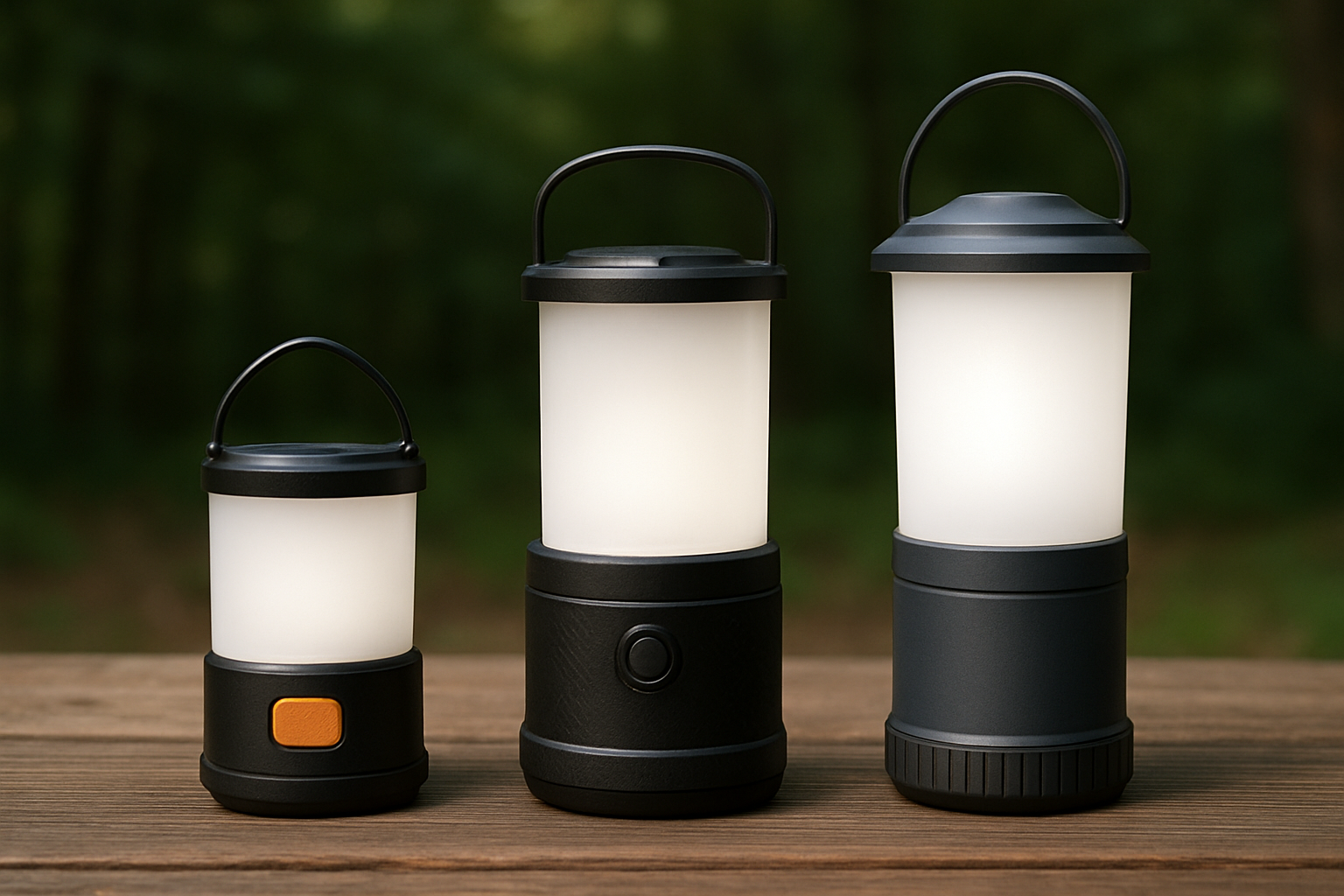
To help you see the trade-offs at a glance, the table below compares typical performance and dark-sky features for each solution type. Values are representative ranges drawn from manufacturer specifications and field-use reports, not a single brand. As always, dim settings, warm color temperature, and physical shielding produce the greatest real-world efficiency gains, regardless of the raw lumen rating.
| Solution | Typical Output Range | Estimated Runtime (Low/Med) | Power Source | Dark-Sky Features | Best For |
|---|---|---|---|---|---|
| Regulated Warm-White Lantern | 50 to 300 lumens | 20 to 50 h / 8 to 15 h | Rechargeable or replaceable cells | Top shade, warm 2700 to 3000 K, diffuser | Family sites, basecamp hub |
| Hybrid Solar and Universal Serial Bus (USB) Lantern | 50 to 200 lumens | Multi-day with sun / Weekend per charge | Solar + Universal Serial Bus (USB) | Downward mounting, warm color | Sunny basecamps, festivals |
| Headlamp with Red and Warm Modes | 1 to 300 lumens | Dozens of hours (ultra-low) / 8 to 20 h | Rechargeable or replaceable cells | Red mode, low-low, beam angle control | Night hikes, tent tasks |
| Dimmable Low-Glare String Lights | Soft ambient (dimmable) | Multiple evenings at 10 to 30 percent | Power bank or 12 volt direct current (DC) | Downlight mounting, frosted nodes | Social areas, pathways |
| Compact Magnetic Task Light | 50 to 300 lumens | Several hours on low/med | Rechargeable cell | Directional shielded beam | Cooking, repairs |
| Motion-Activated Warm-Dim Light | 5 to 50 lumens | Weeks to season-long (intermittent) | Rechargeable or replaceable cells | Low mounting, timed shutoff | Tent entry, paths |
| Lantern-Power Bank Hybrid | 150 to 400 lumens | 10 to 30 h (med) | Replaceable 18650 cells | Downward optics, shade | Remote trips, emergencies |
How We Evaluate Efficiency and Dark-Sky Friendliness
Battery efficiency is not just about big batteries; it is about how wisely light is created and directed. We assess luminous efficacy (lumens per watt), driver regulation that maintains steady output, and beam control that puts light where you need it and nowhere else. Optical shielding, frosted diffusers, and warm correlated color temperature (CCT) [correlated color temperature (CCT)] reduce glare and pupil constriction, letting you see better with less brightness. Studies in chronobiology suggest warm light around 2700 to 3000 Kelvin suppresses melatonin less than cool white, which helps campers rest more naturally.
We look at dimming quality too. Some lights use pulse-width modulation (PWM) [pulse-width modulation (PWM)] that can introduce flicker; better designs deliver smooth, flicker-minimized output that is easier on eyes and cameras. We verify environmental resilience via Ingress Protection (IP) [Ingress Protection (IP)] ratings, ensuring dust and water resistance match your environment. If you are unsure what those codes mean, see our IP rating camping lights guide to pick the right weather resistance. And because recharging is part of the equation, we prefer Universal Serial Bus (USB) Type-C [Universal Serial Bus (USB)] input for durability and faster top-ups in the field.
From an environmental perspective, shielding and low output dramatically cut skyglow. Directing light downward decreases the fraction of photons escaping into the atmosphere, which dark-sky observatories and park services increasingly request. The bottom line: a warm, aimed, and dimmed 60-lumen light often works better than a bare 300-lumen blast, and it will last many times longer on the same battery.
Setup, Use, and Maintenance: Get More Hours From Every Charge
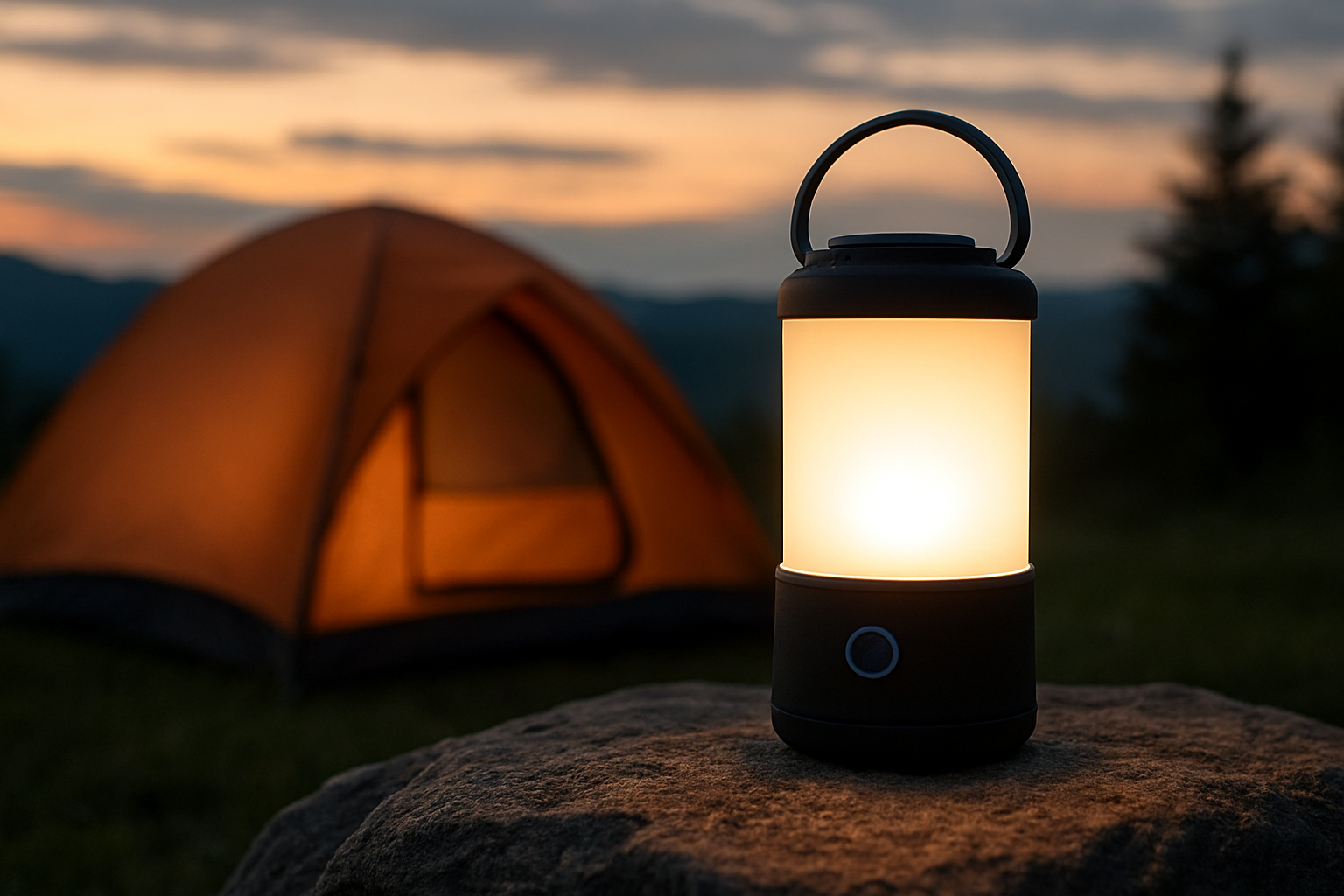
Efficiency starts with placement. Hang lanterns just above eye level with a top shade to prevent upward spill. Mount string lights under awnings or table lips so the glow bounces off surfaces instead of blasting eyes. Keep headlamps angled down and use a hat brim as a shield. These simple choices reduce the perceived need for higher brightness and extend runtime dramatically.
Next, prioritize low modes and warm settings. Use red mode for close tasks that do not need color fidelity. Reserve high output for brief bursts only. If your light offers dim-to-warm, the softer tone at lower brightness will feel more comfortable and will discourage over-bright use. For motion-activated lights, set shorter delays and lower outputs; most trips do not require more than a gentle glow.
On the power side, start trips with fully charged cells and store spares in a cool, dry organizer. For replaceable lithium-ion batteries, follow manufacturer guidance for safe transport and rotation. Keep Universal Serial Bus (USB) [Universal Serial Bus (USB)] cables tidy and protected to avoid stress on ports, and consider a small 12 volt direct current (DC) [direct current (DC)] panel meter or battery indicator to learn your true consumption. A little feedback helps you build instincts that save watt-hours automatically.
Feature Checklist by Activity
Match features to your trip, not vice versa. The table below maps common camping scenarios to the lighting traits that keep power draw low while preserving comfort and courtesy at night. Use it as a quick pre-trip planning tool before you pack.
| Activity | Primary Lights | Must-Have Features | Nice-to-Haves |
|---|---|---|---|
| Backpacking (Solo or Duo) | Headlamp, small regulated lantern | Sub-5 lumen mode, warm 2700 to 3000 Kelvin, top shade | Motion puck for tent, high Color Rendering Index (CRI) [Color Rendering Index (CRI)] |
| Family Car Camping | Lantern, string lights, motion pucks | Dimmable control, downward mounting, warm-dim | Hybrid solar charging, high Color Rendering Index (CRI) [Color Rendering Index (CRI)] |
| Festivals and Group Sites | Hybrid solar lantern, string lights | Memory dim settings, frosted nodes, warm color | Universal Serial Bus (USB) [Universal Serial Bus (USB)] power bank lantern |
| Overlanding and Remote Basecamps | Lantern-power bank hybrid, task light | Replaceable cells, downward optics, sturdy Ingress Protection (IP) [Ingress Protection (IP)] | Panel meter, headlamp with red mode |
Camp Crew Lighting: Trusted Guidance for Clear Skies and Long Runtimes
Camp Crew Lighting specializes in lighting that respects the night. We focus on solving the exact problems campers face: traditional lights that blow out night vision, chew through batteries, and throw glare into the sky and into your neighbor’s tent. Our comprehensive reviews of camping lighting products examine battery efficiency, optical design, control interfaces, and color science so you can buy with confidence. If you want the best mix of runtime and comfort, our head-to-head comparisons and feature evaluations make the trade-offs obvious.
Beyond reviews, we provide guidance and publish example layouts for dark-sky-friendly lighting in tents, vans, and group sites. Think downlight-first plans, layered brightness zones, and warm spectra that invite conversation without attracting bugs or disrupting sleep. We publish how-to guides on setup and maintenance, from building a low-glare string run to programming motion sensors for minimal energy use. We also curate recommendations by price point and activity, so whether you are a backpacker on a budget or a festival organizer, you will find a tailored path.
The result is a calmer camp, longer runtimes, and a cleaner night environment. You will save battery power, see terrain and faces more naturally, and keep the stars in view. That is what efficient lighting should deliver.
--
Power-sipping lights, softer nights, brighter skies above - that is the promise of choosing intentionally designed gear.
Imagine your next trip lit by warm pools of glow where you need them and deep, velvety darkness where you do not. In the next 12 months, more brands will adopt downward optics, warm-dim control, and replaceable cells as standard.
Which piece will you add first to build the best battery efficient lighting for camping that fits your style and preserves the night you came to enjoy?
Additional Resources
Explore these authoritative resources to dive deeper into best battery efficient lighting for camping.
- The Best Camping Lanterns of 2025 | Tested by GearJunkie
- 8 Best Camping Lanterns and Lights of 2025 (Tested)
Choose Smarter Camp Lights With Camp Crew Lighting
Camp Crew Lighting guides campers, outdoor enthusiasts, and festival-goers with comprehensive reviews of camping lighting products to preserve dark skies, cut glare, extend battery life, and tailor setups.
Related Articles

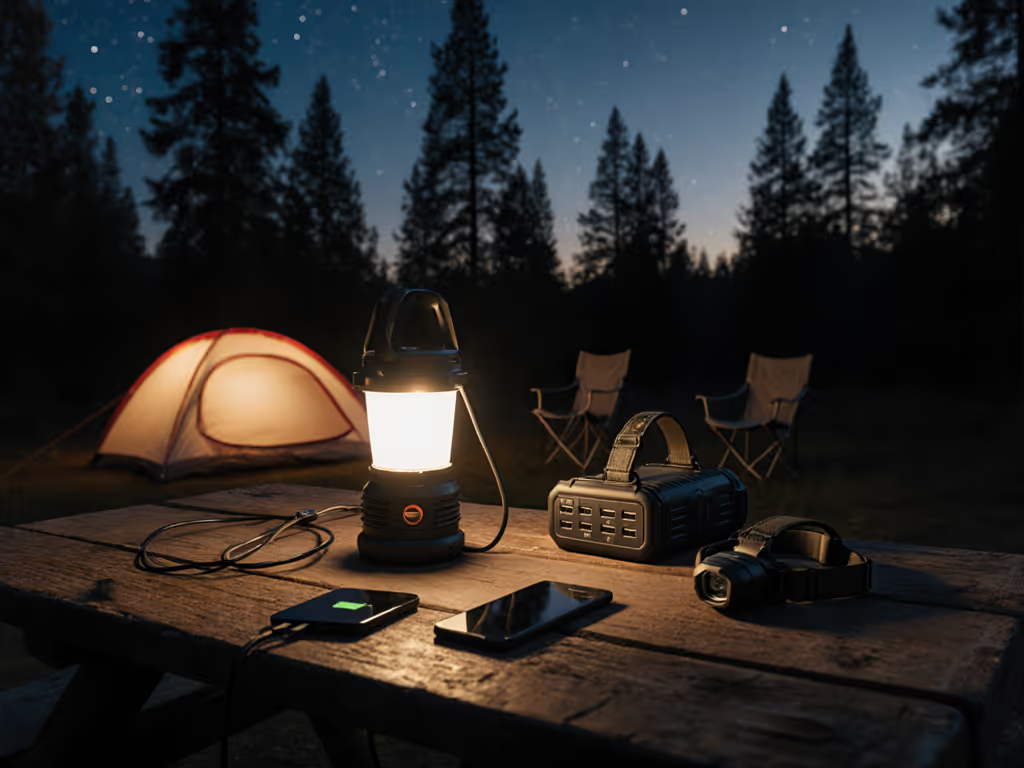
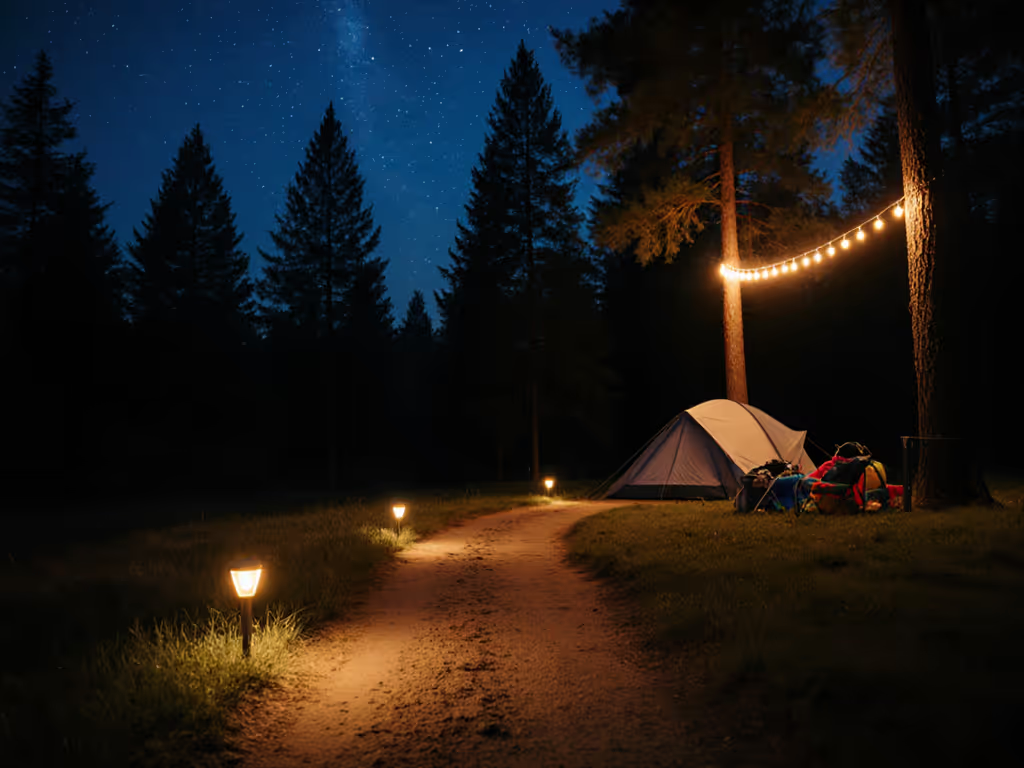
Campsite Pathway Lighting vs String Lights: Safety First
Learn when to choose pathway lights over string lights - and how to set each up - for safer nighttime navigation that preserves night vision. Get practical tips on height, spacing, warm color temperatures, and etiquette to keep the site calm and neighbor-friendly.
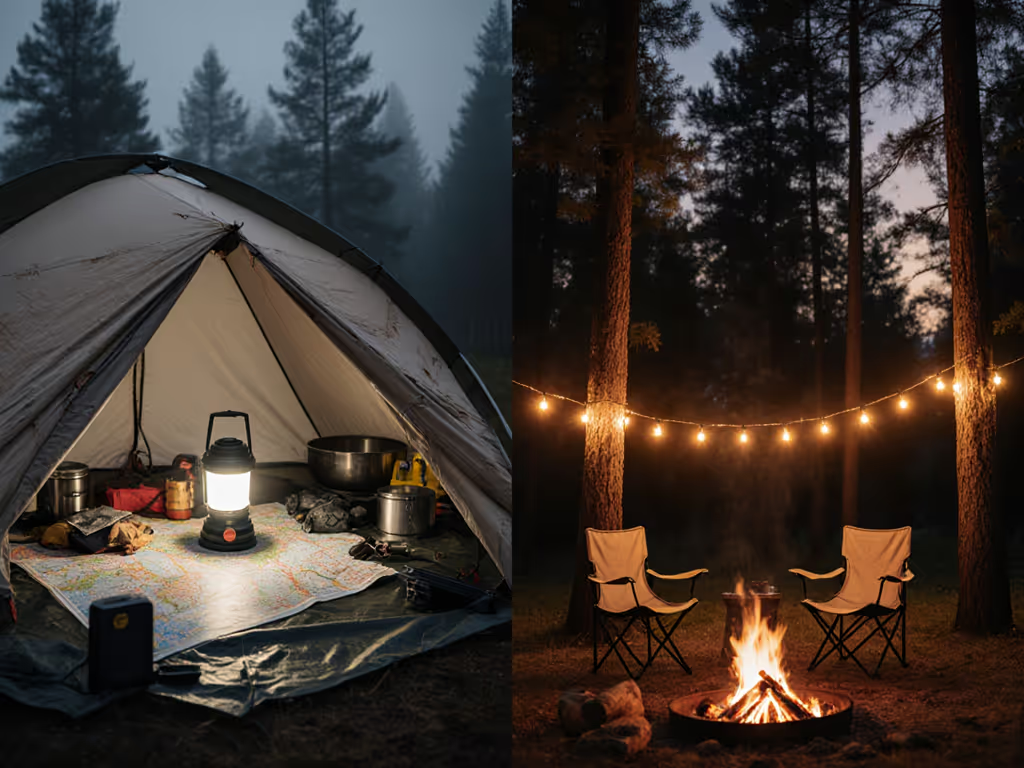
Lanterns vs String Lights: Match Camping Scenarios Right
Learn when to use lanterns for critical tasks and when to deploy string lights for safe, dark‑sky‑friendly ambience. Get field‑tested criteria - CRI, CCT, runtime, cold‑weather performance, and battery compatibility - and a simple setup protocol for car camping, backpacking, and vanlife.
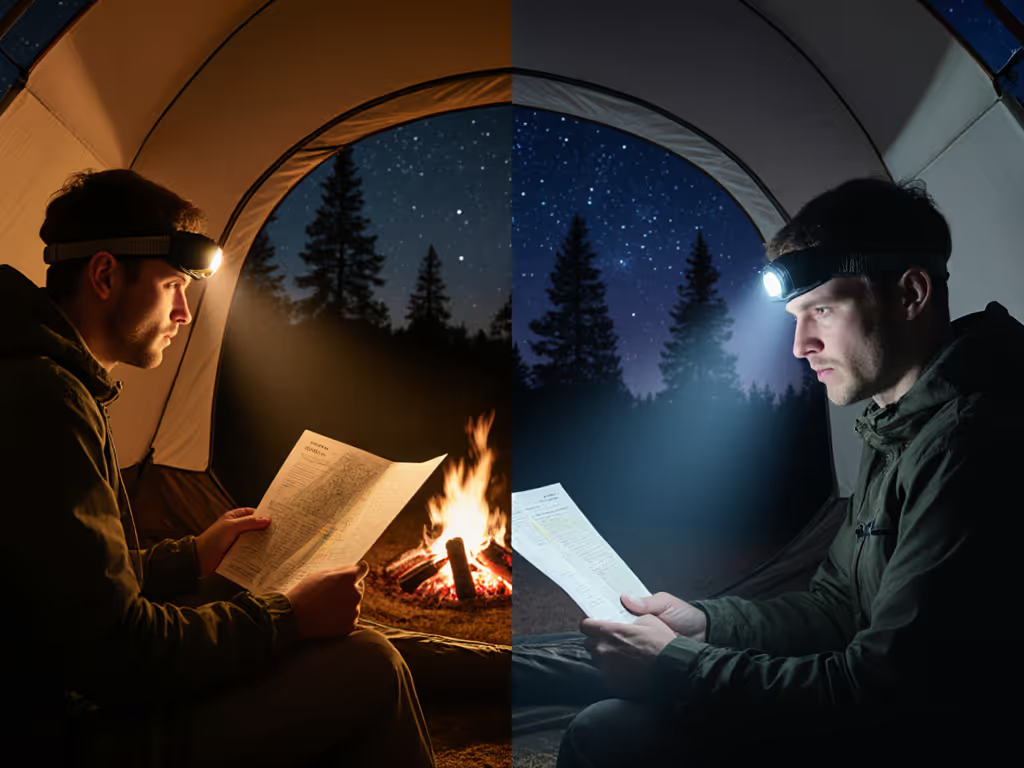
Warm White vs Cool White Camping Lights: Preserve Night Vision
Choose warm white (2700–3500K) to preserve night vision, reduce glare, and save battery life; cool white delays adaptation and disrupts sleep. Reserve neutral/cool beams for brief, focused tasks and verify CCT, CRI, dimming, and beam shielding for safer, more comfortable campsites.
